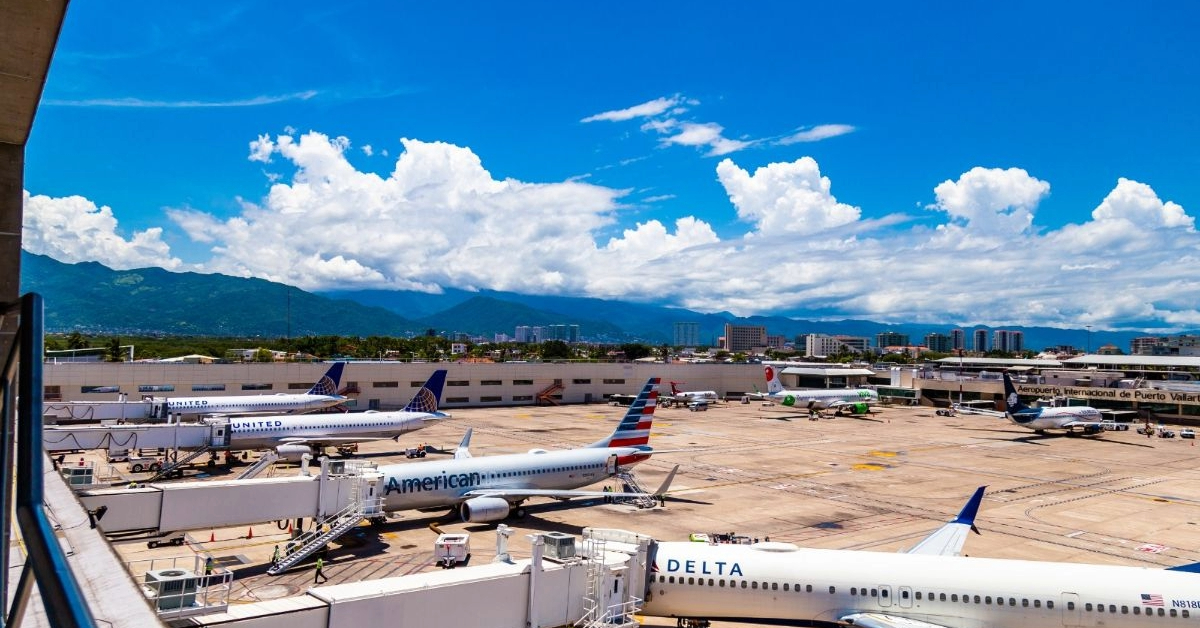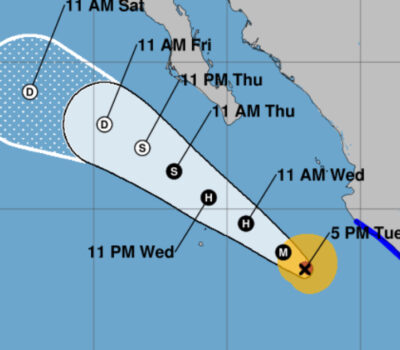Puerto Vallarta International Airport’s New Terminal Building project is 45% complete, featuring new boarding areas and advanced infrastructure to boost operational capacity by 130%, with full delivery slated for the end of 2026 amid rising passenger demand.
The Puerto Vallarta International Airport’s New Terminal Building (NET) project has now reached 45 percent completion, airport director Cryshtian Amador Lizardi announced on the sidelines of the Puerto Vallarta Meetings conference. “The progress is already evident when driving along the main avenue,” he said, noting that critical systems such as connections to the runway and boarding areas have been finalized even as work continues on the main terminal structure.
According to Amador Lizardi, the expansion represents more than just an enlargement of existing facilities. “We’re essentially building a new airport: we’re only maintaining the existing runway, but the terminal, boarding areas, and connection systems will be new and more efficient,” he explained, underscoring the scope of the transformation underway.
This undertaking is part of a comprehensive investment plan, with 6 billion pesos allocated during the 2020–2024 five-year cycle and an additional 3.6 billion pesos announced for the current period. The director emphasized that these funds have been earmarked not only for construction but also for state-of-the-art technology and passenger-centric design elements.
Infrastructure improvements focus heavily on streamlining passenger flow. New automated walkways and covered boarding bridges will cut transfer times, while advanced baggage-handling systems aim to reduce delays and lost luggage incidents. The project design, led by renowned architectural firm LBR&A, integrates these systems into a cohesive layout that will support an anticipated 130 percent increase in operational capacity.
LBR&A’s blueprint incorporates sustainable building practices, including rainwater harvesting for non-potable uses and energy-efficient HVAC systems. According to project planners, these measures will help minimize the airport’s environmental footprint even as annual passenger volumes are projected to climb sharply over the next two decades.
During the first four months of 2025, Puerto Vallarta International handled 2.7 million passengers. Domestic traffic surged by 15 percent compared to the same period last year, while international figures dipped slightly. “Factors such as current political and economic issues must be considered,” Amador Lizardi noted, particularly affecting U.S.-bound routes, which account for 26 connections at the airport.
Despite the slight adjustment in international service, the overall passenger balance shows a 2 percent year-on-year increase. “This growth is driven by the dynamism of the domestic market,” the director added, pointing to rising demand from Mexican travelers exploring coastal destinations.
Looking ahead, the airport is preparing for its busiest months in July and August, when summer holiday traffic typically peaks. “This major season will truly test our readiness,” Amador Lizardi said. “We’ll be ready for this demand thanks to the progress we’ve made on the NET.”
To ensure sufficient connectivity, the airport is working closely with carriers to reactivate existing routes and explore new ones. Discussions are in progress with several European airlines about potential transatlantic services, which would mark a significant milestone for Puerto Vallarta as an international gateway.
In March, additional frequencies to Monterrey were confirmed, and in June Viva Aerobus will inaugurate a new route to Morelia. These enhancements form part of a broader strategy to diversify the airport’s network and stimulate regional tourism growth.
Beyond expanding flight offerings, the Puerto Vallarta airport authority is collaborating with local hotels, tour operators, and the Tourism Promotion Trust to craft joint marketing initiatives. These efforts aim to position the destination as a year-round convention and leisure hub, capitalizing on modernized infrastructure to attract more events and business gatherings.
The NET’s completion is expected to generate significant employment opportunities: hundreds of construction jobs are already underway, and once operational, the new terminal will support dozens of permanent positions in airport operations, retail, and security.
Economic analysts forecast that the expanded facility will catalyze further investment in surrounding areas, driving hotel development, enhancing transportation links, and stimulating ancillary services such as car rentals and ground-transfer companies.
Environmental oversight remains a priority throughout the build. Project managers have engaged with federal and state agencies to ensure compliance with coastal zone regulations, preserve nearby mangrove ecosystems, and implement noise-mitigation measures for communities adjacent to the airport.
“The NET is more than bricks and mortar,” Amador Lizardi emphasized. “For the destination, it is undoubtedly the gateway to the future of competitiveness and economic development.”
As the Tourism Promotion Trust continues to host gatherings like Puerto Vallarta Meetings—designed to showcase the city’s appeal for events and conventions—the airport’s modernized facilities will serve as a crucial asset. “We at the Pacific Airport Group are ready and confident that this development will be achieved, that more meetings like these will be held, and more deals will be closed,” he said.
Full delivery of the New Terminal Building is scheduled for the end of 2026, setting the stage for a new era of air travel to Puerto Vallarta, where enhanced capacity and cutting-edge design will meet growing tourist demand.
Puerto Vallarta International Airport’s New Terminal Building project is 45% complete, featuring new boarding areas and advanced infrastructure to boost operational capacity by 130%, with full delivery slated for the end of 2026 amid rising passenger demand.












